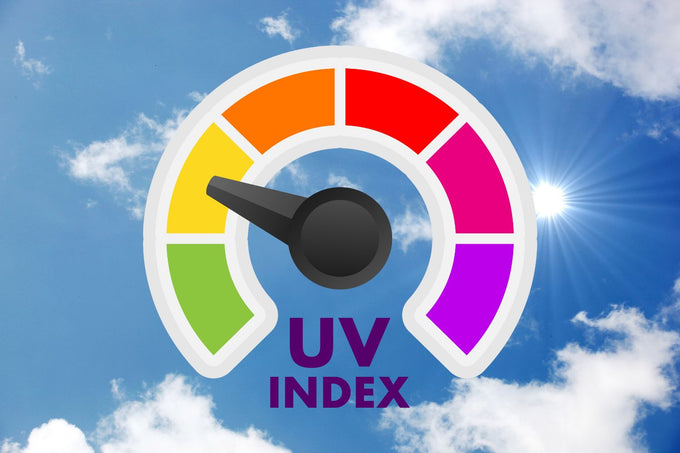Understanding the UV Index: What It Is, Why It Matters, and How to Plan Around It

Every day, we check the weather to decide what to wear or whether to bring an umbrella. But there’s another number that can have a big impact on your health: the UV Index.
At UV Skinz, our mission is to help families stay sun-safe. Understanding the UV Index is one of the most important ways to protect your skin from harmful UV rays. Whether you’re planning a beach day, a hike, or simply running errands, this simple tool can help you make smarter choices outdoors.
What Is the UV Index?
The UV Index is a scale developed by the World Health Organization (WHO) and the National Weather Service (NWS). It measures the strength of ultraviolet (UV) radiation from the sun at a specific place and time. The scale runs from 0 to 11+, with higher numbers indicating a greater potential for skin and eye damage.
|
UV Index |
Risk Level |
Recommendations |
|
0–2 |
Low |
Minimal protection is needed. Stay aware. |
|
3–5 |
Moderate |
Seek shade midday and wear protective clothing. |
|
6–7 |
High |
Use SPF, wear UPF clothing, and avoid peak hours of sun. |
|
8–10 |
Very High |
Take extra precautions and limit time outdoors. |
|
11+ |
Extreme |
Unprotected skin can burn in minutes. Stay indoors or fully cover up. |
Why Does the UV Index Matter?
UV radiation is a major contributor to:
- Sunburn
- Premature skin aging
- Eye damage
- Skin cancer, including melanoma
Even on cloudy days or in cool temperatures, UV rays can still reach your skin and cause long-term damage. That’s why relying on temperature alone isn’t enough—you need to know the UV Index.
How to Check the UV Index
Most weather apps and websites include a daily UV Index forecast. You can also use the EPA’s UV Index Forecast or enable UV alerts on your smartphone or smartwatch.
Look for the UV Index number for your ZIP code, especially during late morning to mid-afternoon (10 AM to 4 PM), when UV exposure is at its highest.
How to Plan Your Day Around the UV Index
Knowing the UV Index helps you make informed decisions to protect your skin.
Low (0–2): Safe to Be Outside but Stay Aware
- Great for outdoor activities.
- Sunglasses and a hat are still smart choices if you’re out for a while.
Moderate to High (3–7): Take Precautions
- Try to avoid direct sun between 10 AM and 4 PM.
- Apply broad-spectrum sunscreen with SPF 30 or higher.
- Wear UPF 50+ clothing and a wide-brim hat.
- Find shade when possible.
Very High to Extreme (8–11+): Maximize Protection
- Stay indoors or in full shade during peak UV hours.
- If you’re outside, wear long-sleeved UPF clothing, sunglasses with UV protection, and reapply sunscreen every two hours or more often if swimming or sweating.
- Schedule outdoor activities for early morning or late afternoon.
Common Myths About UV Exposure
“It’s cloudy, so I don’t need to worry.”
False. Up to 80% of UV rays can pass through clouds, meaning your skin can still burn.
“I tan, I don’t burn—so I’m safe.”
False. A tan is a sign of skin damage. Any color change from sun exposure increases your risk of skin cancer.
“It’s not hot, so the UV can’t be strong.”
False. UV levels are related to the angle of the sun, not the temperature. Sunny days in cooler weather (or at higher altitudes) can still bring high UV exposure.
A Simple Habit for Lifelong Protection
Checking the UV Index can become a quick part of your daily routine, just like checking the forecast. A glance at that number helps you know what kind of sun protection your skin needs, whether that’s a quick layer of sunscreen or full-coverage gear.
Staying sun-safe doesn’t mean avoiding the outdoors. It simply means being smart about when and how you spend your time outside.
In Summary: Why It Matters
- The UV Index tells you how strong the sun’s rays are.
- It helps you prevent sunburn, skin aging, and skin cancer.
- Small, daily choices (like wearing sun-protective clothing or avoiding midday sun) can have a big impact over time.
Want to Learn More?
UV Skinz is here to help make sun safety second nature. Explore our blog for more educational tools and join us in creating a healthier relationship with the sun.






